One of the very first fans of this blog was a gentleman named Brandt Maxwell, who is a master of quirky geography lists. One of his finest lists (in my food-obsessed opinion, anyway) includes the names of the 10 largest countries in the world that do not have a U.S. restaurant devoted solely to their cuisine. It’s as if Brandt threw down the gantlet in my general direction, before he had any idea that I existed.
Country #7 on Brandt’s list is the landlocked African nation of Malawi. Malawi isn’t all that small (15 million people, more than Cuba or Greece but fewer than the Netherlands), but very few Americans have ever heard of the place. If you’re bored this weekend, walk into your local Wal-Mart, and ask somebody where Malawi is. They’ll probably look at you quizzically, think about it for a moment or two, and then point you toward the electronics aisle.
But as luck would have it, my (American) pal Adam happened to spend three months volunteering in Malawi, where he met a brilliant Malawian HIV/AIDS expert named Richard, who then came to New Jersey a few months later to complete a one-year fellowship. Richard graciously agreed to prepare a typical Malawian meal for us, even though he had only met me once, while eating Belgian food several months earlier.
I’ll start gushing about the food in just a moment, but it’s hard to even begin to explain how much we learned from an evening in a kitchen with Richard. In addition to being a talented chef, he gave us an amazing education on Malawian religion and politics, African economics, the condition of youth impacted by HIV/AIDS in Malawi, and, of course, southern African food culture. I could ramble for days, but since this is a food blog, so I’ll try really hard to behave myself and stick to the food-related topics.
Since Richard was kind enough to lend his time and talents to cook our meal, the least I could do was purchase the ingredients (and, of course, enough beer to keep us silly for the whole night). Richard sent me an email with an ingredient list seemed almost comically short: “We will need corn flour (mealie), beef for stew, some onion, tomato, garlic (optional), lettuce (or such type of vegetable).”
And that was it. Five ingredients, six if you included the optional garlic. I’m a huge fan of simple food, but I was a little bit worried that something had been lost in translation, and that perhaps I’d bought an insufficient sack of groceries. (Though just to be safe, I also bought a bunch of collard greens, since I had a funny feeling that Richard really wanted a heartier, cookable green instead of lettuce.) Along with Adam and my lovely girlfriend, we spent a relaxed couple of hours in the kitchen, taking our sweet old time chopping the beef, tomatoes, onions, garlic, and collards into appropriately sized pieces—after all, I was in no hurry after eating Chilean and Swedish food earlier in the day. Our Malawian dinner turned into one of the best I’ve eaten in NYC, despite the sparse list of ingredients.
As with any Malawian meal, the secret was the nsima, Malawi’s ubiquitous staple food, made only from water and “mealie meal”—also known as ufa or white cornmeal. The process sounds simple enough: heat a pot of water, and then stir the mealie meal in, one spoonful at a time. Once the nsima reaches the correct consistency, all you need to do is let chunks of it cool until it’s appropriately congealed into workable balls of love. The nsima is then used to scoop up some sort of ndiwo (literally “relish”, though most Americans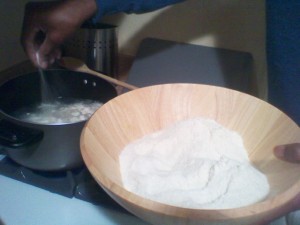
would probably think of ndiwo as a thickened stew, made from nearly any type of meat or vegetable).
As we watched Richard work his magic, it seemed that making good nsima was actually pretty darned difficult. Ideally, a good nsima should hold its shape, but have a smooth consistency. If the water isn’t the right temperature, lumps will form. If the cook doesn’t stir constantly or if the mealie is added too quickly, more lumps will form. If the cook uses too much water, the nsima will fail to hold its shape. If the cook uses too much mealie, then the nsima might become too firm to eat.
Nsima can be extremely serious business in Malawi. For many Malawians, no meal is complete without nsima, and men have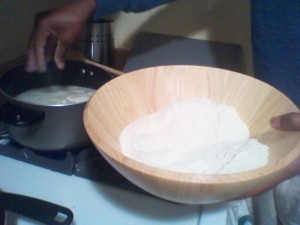
been known to select their brides largely based on the quality of their nsima. Woe be unto the foreign visitor who insults nsima: a few years ago, a British teacher in Malawi dared to insult nsima on her blog, calling it “the most disgusting and pointless food in the history of the world.”
Wow, that was a bad move. Many of the comments on her post were homicidal:
I know who the bloody naughty mzungu girl is and me as Malawian can not let some stupid mzungu demean us on our own soil. Over our dead body. You will hear it in the news. Enough is enough!
l have a strong opinion that you suffer from syphillis or you have once fallen in a toilet tank. please leave our country and never return.we will deal with u idiot.
I hope the police get hold of her ASAP before we angry malawians break her bones,as her address and mobile number are posted on her blog.
And my personal favorites…
Let her go back to her country where they kiss dogs. It is disgusting to us too.
Behead the wicked one. Those who insult our nsima and its delicacies do not deserve to live.
So now you know what NOT to do when enjoying the local hospitality in Malawi.
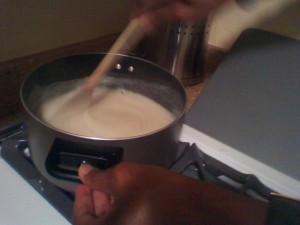 Luckily, we had absolutely no reason to insult Richard’s nsima, partly because we wouldn’t have any interest in disrespecting Malawi and its beloved national dish, and partly because all three of us genuinely loved the stuff. I have a soft spot for corn in all of its incarnations, and I thought that nsima was fun and delicious, especially when served with two amazing—and amazingly simple—ndiwos.
Luckily, we had absolutely no reason to insult Richard’s nsima, partly because we wouldn’t have any interest in disrespecting Malawi and its beloved national dish, and partly because all three of us genuinely loved the stuff. I have a soft spot for corn in all of its incarnations, and I thought that nsima was fun and delicious, especially when served with two amazing—and amazingly simple—ndiwos.
At a typical Malawian meal, diners wash their hands, and then keep the right hand a little bit damp to help manipulate the nsima. You then grab a small ball of nsima, roll it around between your fingers until it gets pleasantly sticky, flatten the ball into a flat noodle of dough, and then use the dough to scoop up the ndiwo. It takes a little 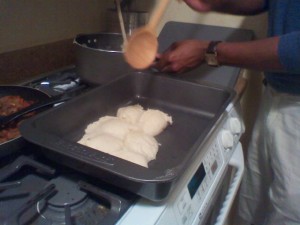 bit of practice to get the nsima properly turned into a useful scoop of the proper consistency, and it can be hard to get the stuff off your fingers and into your mouth unless your hands are still slightly damp.
bit of practice to get the nsima properly turned into a useful scoop of the proper consistency, and it can be hard to get the stuff off your fingers and into your mouth unless your hands are still slightly damp.
Once we got the hang of nsima, we all fell madly in love with the food. Richard made a simple stew of beef, tomato, and onions, and another saute of collards, tomatoes, and more onions. I’m hard-pressed to explain why, exactly, Richard’s ndiwo was so great—was there something magical about the combination of beef, tomatoes, and collards? Was there a particular technique to the way he sautéed and simmered the beef until it was ludicrously soft? Was it the rock salt or the garlic, or maybe some sort of alchemy between the white corn and beef stew? I have no idea, but I spent much of the meal thinking that this was better than nearly any meal I’d eaten in NYC, and wondering what, exactly, Richard had done to make the dish sing.
As we ate, Richard talked a bit about Malawian food culture. Most Malawians think it’s strange and rude to ask another person what they had eaten that day, largely because you could never be sure if somebody could afford to eat much of anything at all; Richard thought that my food blog would seem truly bizarre to many of his countrymen. Richard said that his countrymen—those who are fortuntate enough to have food on their table—usually eat only once or twice a day, partly because many people can’t afford to eat more frequently than that, and partly because nsima is so dense and filling that you always want to take a nap after your meal.
This effect is lovingly referred to as the “nsima coma.” As predicted, Adam passed out almost immediately after we finished eating, and Amber and I had a really tough time staying awake on our stroll home… though that’s probably our own fault for eating far more nsima than is probably reasonable in one sitting—especially if you’d eaten Chilean and Swedish food earlier in the day.
This was obviously my first Malawian meal, but if Richard’s handiwork is any indication, it might not be a terrible idea for an enterprising immigrant to open a Malawian restaurant in NYC. And no, I’m not just saying that to avoid the legendary wrath of the Malawian blogosphere—seriously, the dish was that good, even if the nsima coma put us out of commission for the rest of the night.


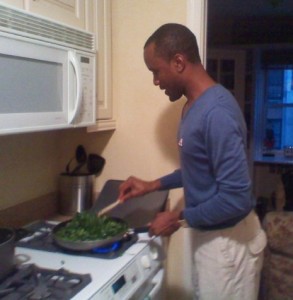
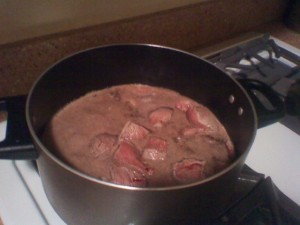
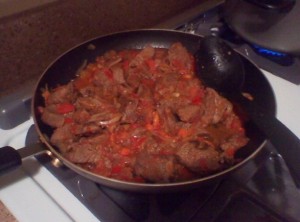
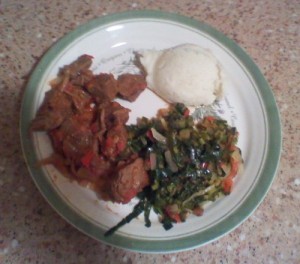






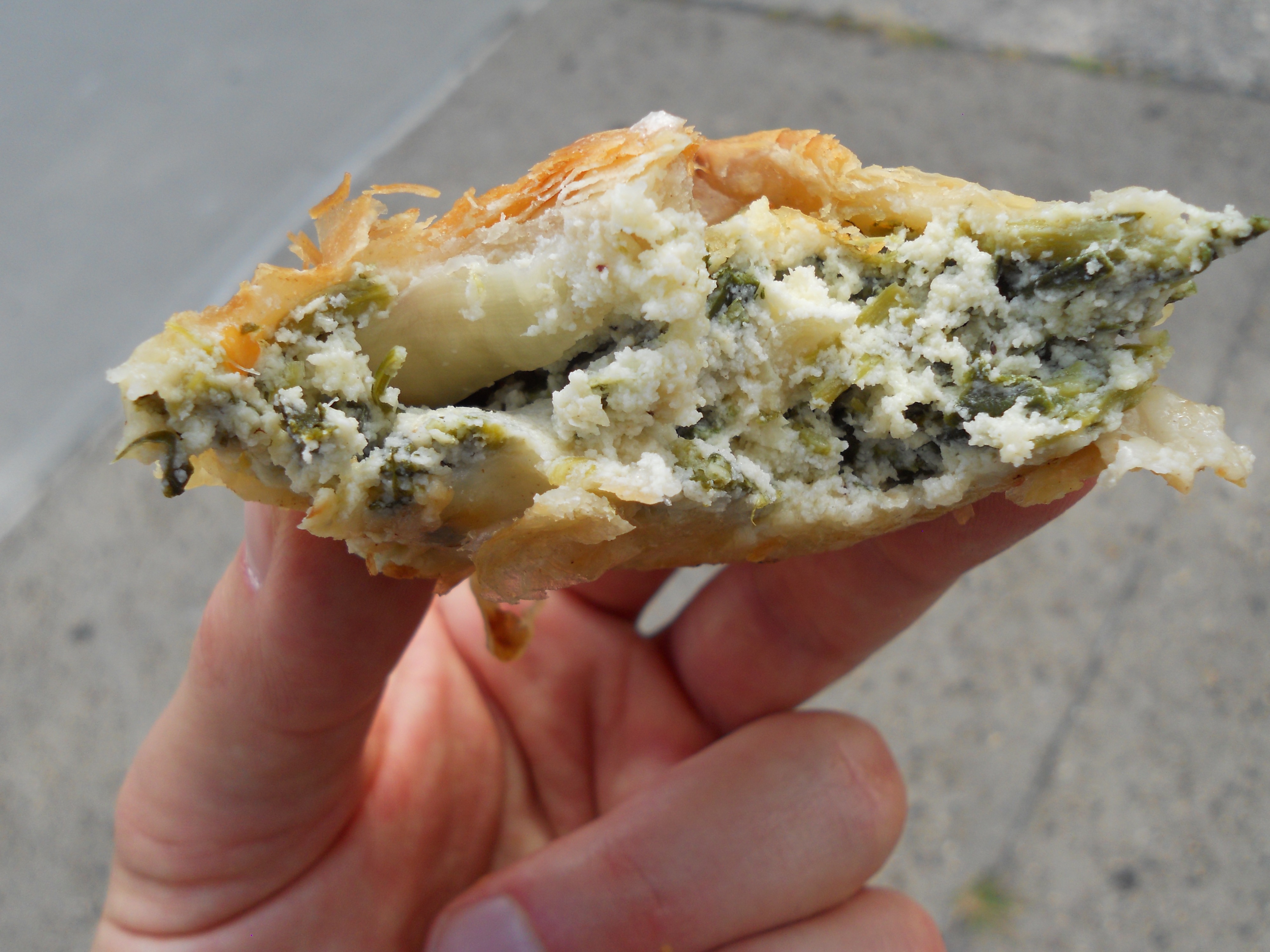
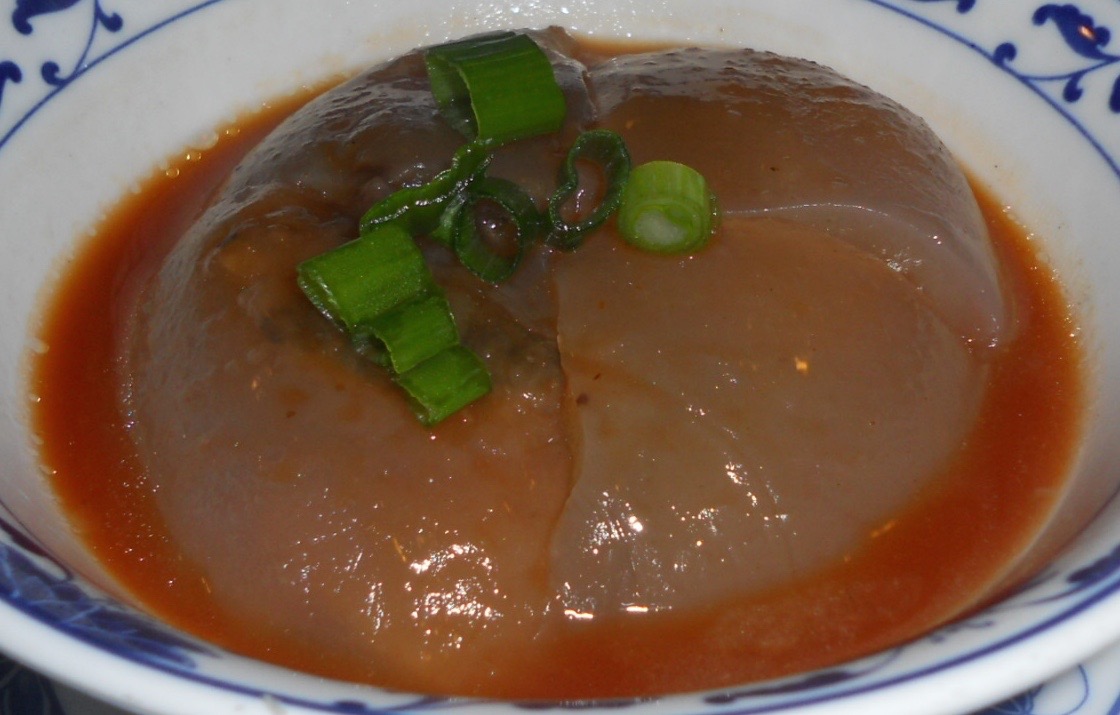
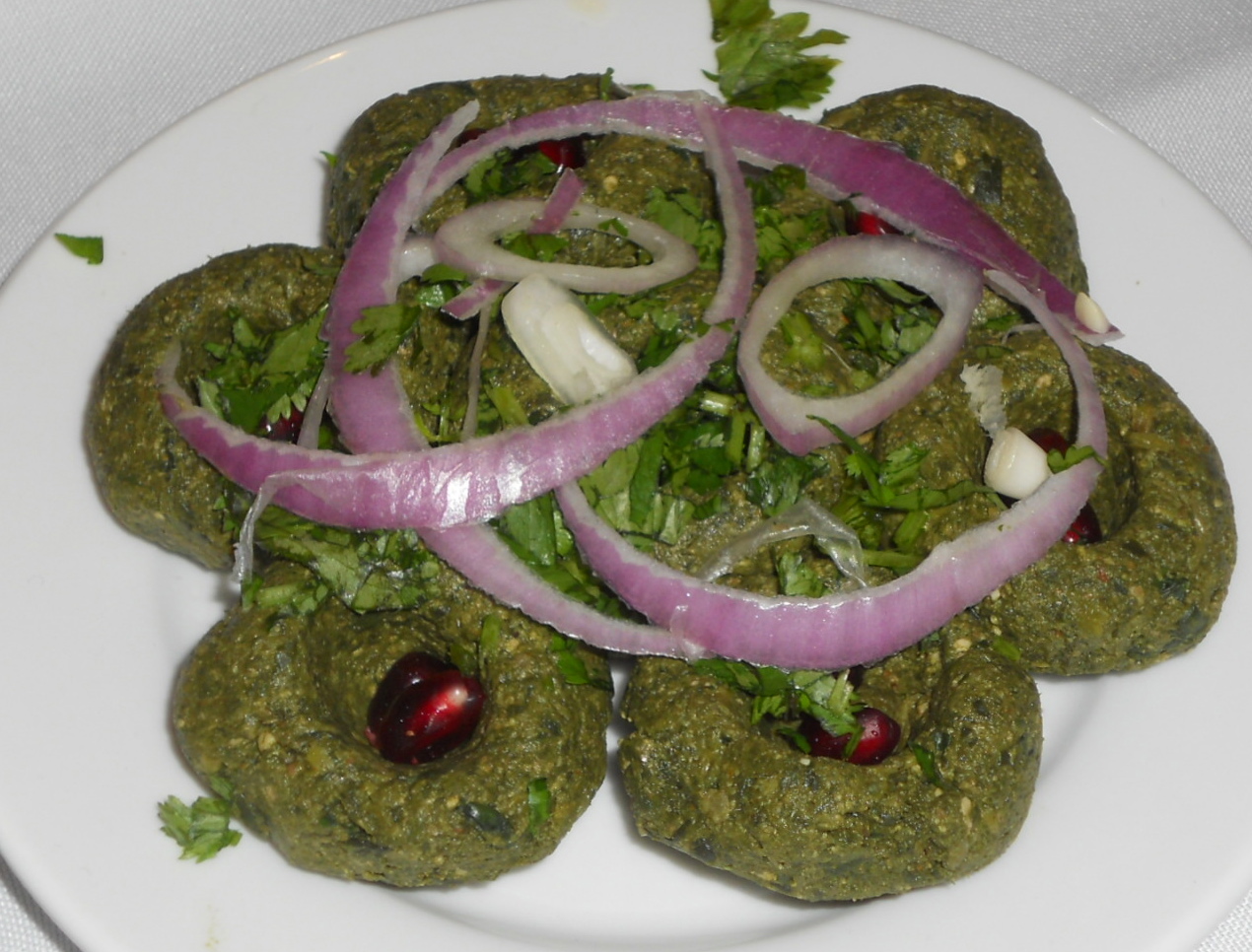
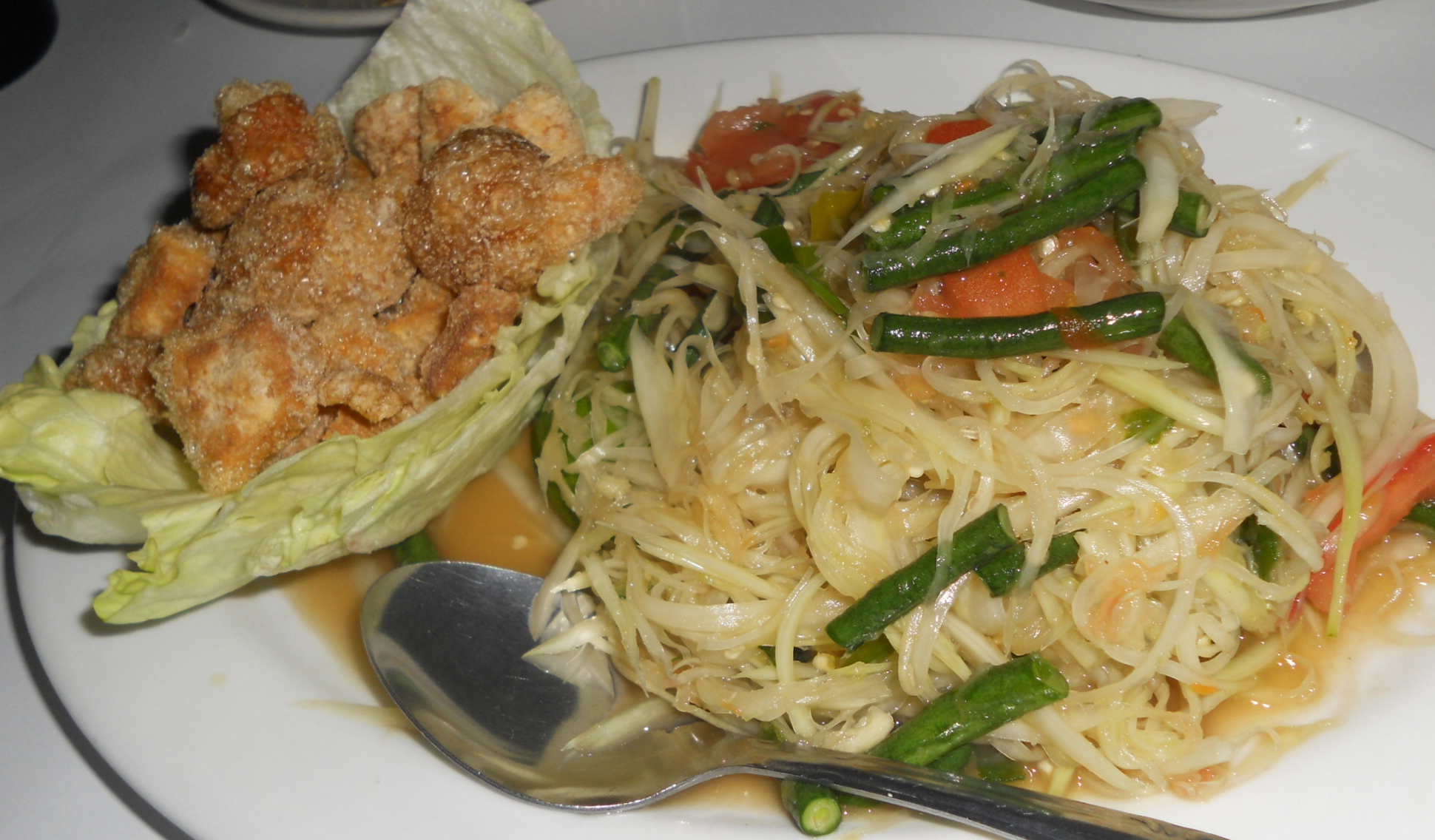
I had the pleasure of spending a month in Malawi this summer. If you think their beef is good, you should try the chicken! Absolutely amazing!
Wow, I’m from Malawi, I live in PA, I enjoyed reading your blog. I’m glad You enjoyed nsima and ndiwo that much. My husband from Germany cant stand nsima, he claims its tasteless but he loves any ndiwo i make. His family loves nsima that it really puts them to sleep. I feel proud to be a Malawian and read your blog.
I truly enjoyed reading this depiction of your Malawian evening. As a Malawian, I felt proud that you had enjoyed nsima and the ndiwo so much, regardless of its simplicity.
Cheers!
Thank you, Nadi! I’m glad that this post has reached at least a few Malawians, and thank you for the kind words. Richard clearly represented Malawi well. 🙂
Absolutely, he did! =D Am glad that you experienced the Warm Heart of Africa.
Cheers!
[…] traditionally eaten with ndiwo, a vegetable stew sometimes including beef, chicken or goat meat. (United Nations of Food gives a gushing step by step account of preparing and eating nsima with ndiwo.) Missjen described […]
You’ll need to ask Richard to return and make you some kondowole. Or, nsima made from cassava flour. Plan to take a nap before the stroll home and be even more smitten with nsima and Malawi.
I’m from Malawi and I live here in the USA,and I’ve never heard a foreigner recommending Malawian meal like this.This is great analysis and well put. One who wrote this article knows how to respect other people’s cultures because food is part of culture. I enjoyed reading every single paragraph of this article. God bless the author of this article. Amen!
Thank you, Jimmy! I’m honored that you enjoyed the article so much, and I think it’s clear that Richard did an incredible job of representing Malawian food, culture, and hospitality. I consider myself very lucky.
My husband is Malawian and I lived there for 3 years and ate nsima daily. You should try kondowle, it is quite different. He should also make chikondamoyo for you. A corn bread type with soya and peanut flour. My favorite. The best ndiwo is greens with peanut flour. I loved your beautiful description.
I am Malawian and my husband is british he thinks nsima is bland but that assuming you eat it on its on which he agrees is absurd as thats not how we eat nsima. He does eat nsima every now and then but eats it everyday when we visit Malawi. thanks for the well written article I will invite my inn-laws for nsima one of these days.
i am a Malawian. Nsima is great and i like it. Kondowole is so heavenlly indeed when eaten with fish whether stewed or braii.